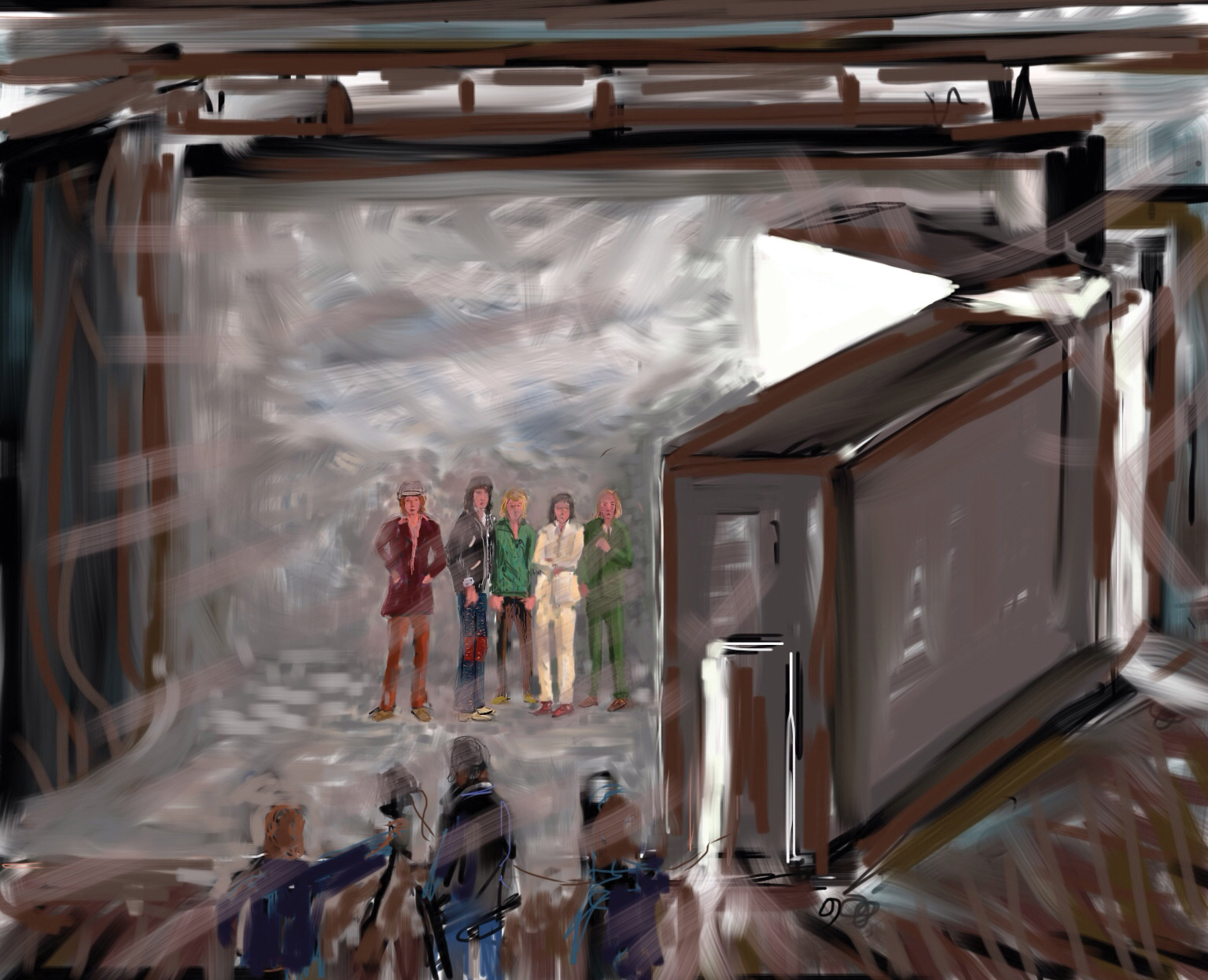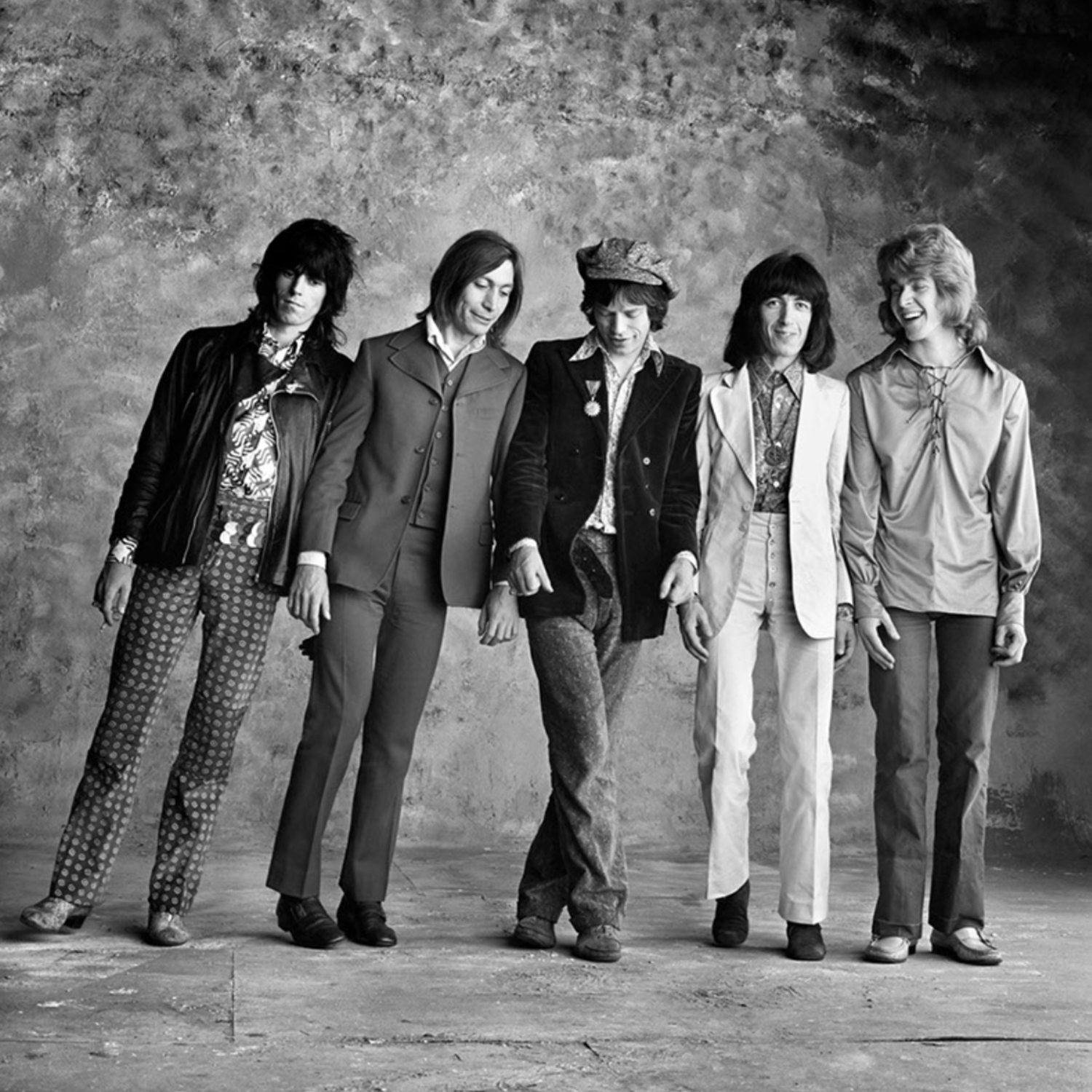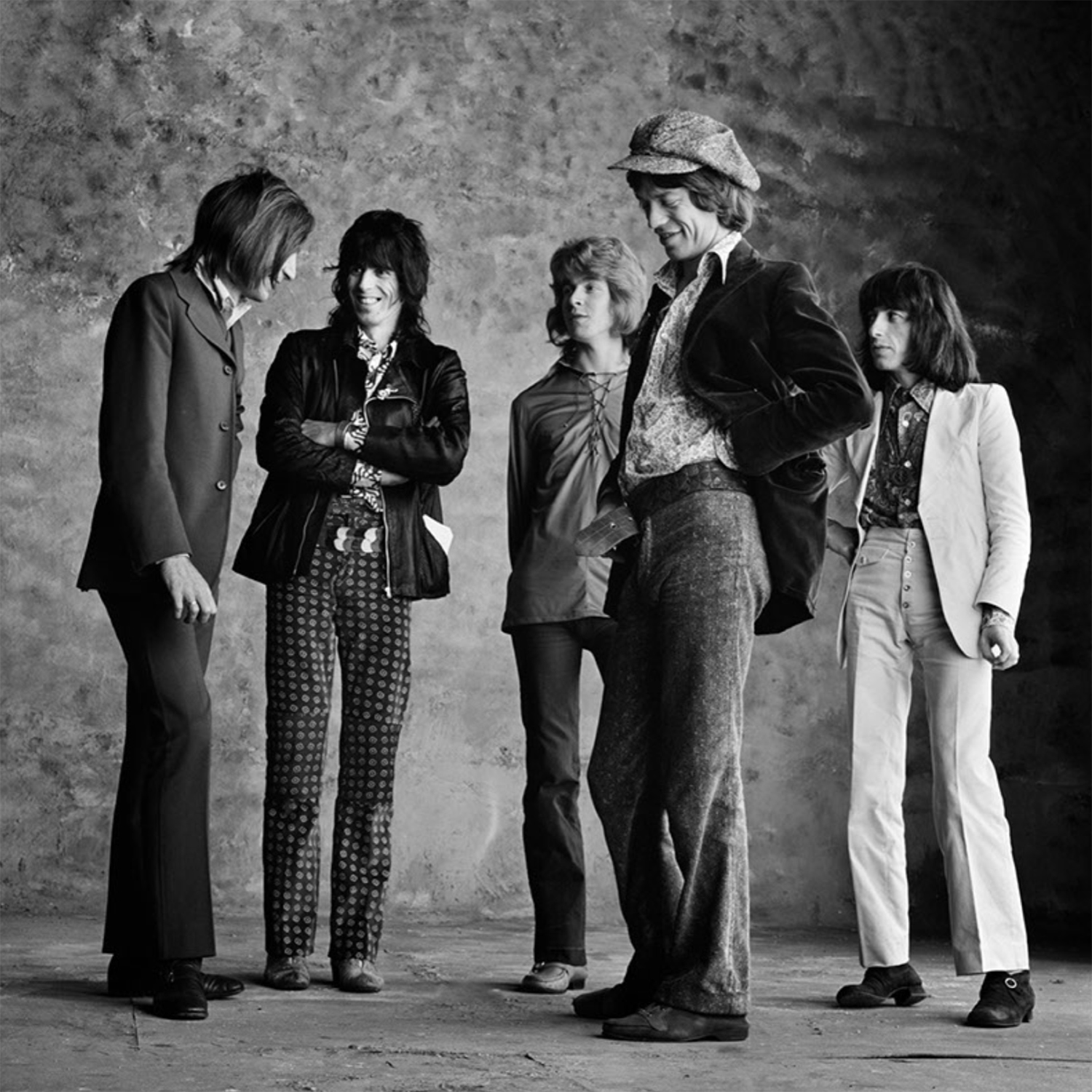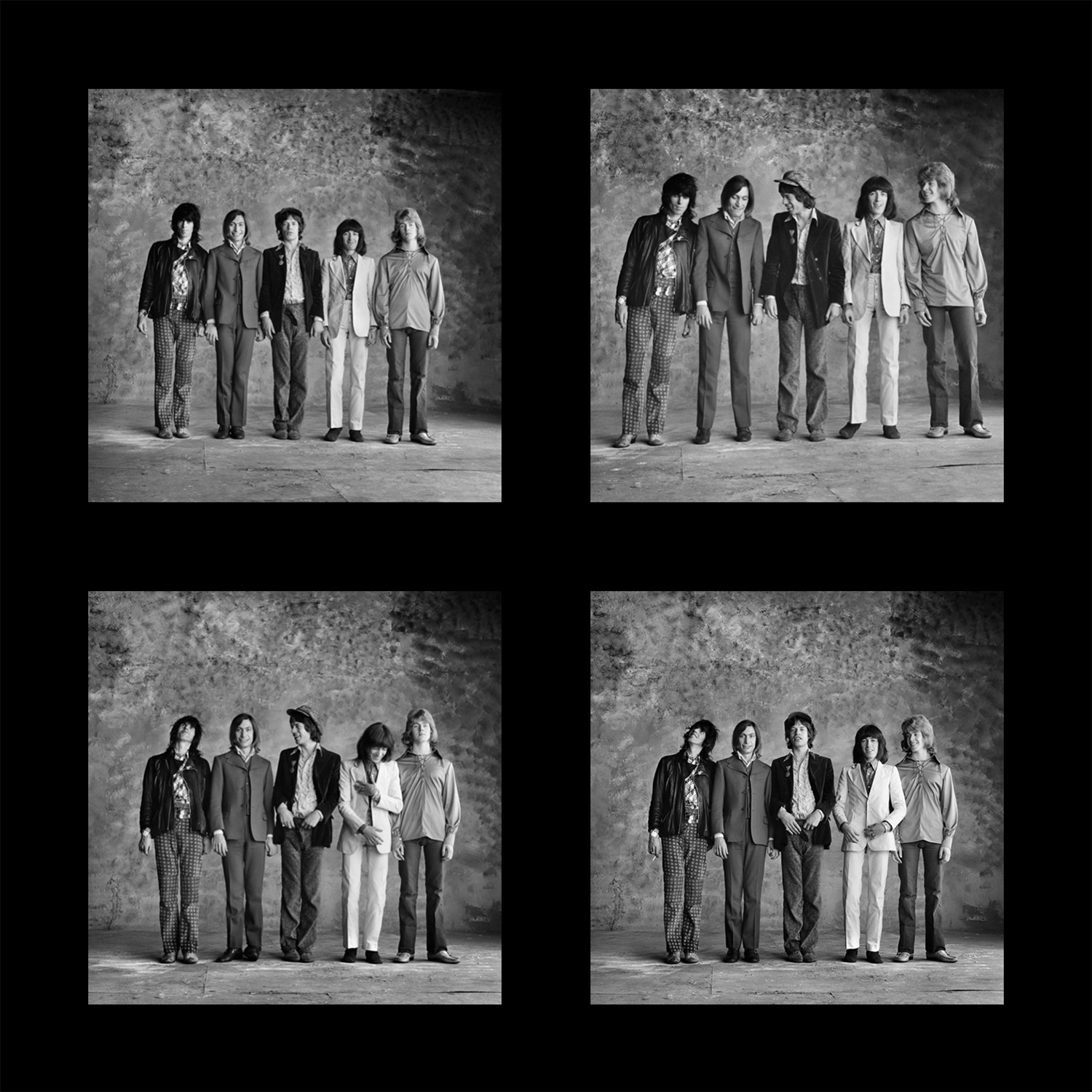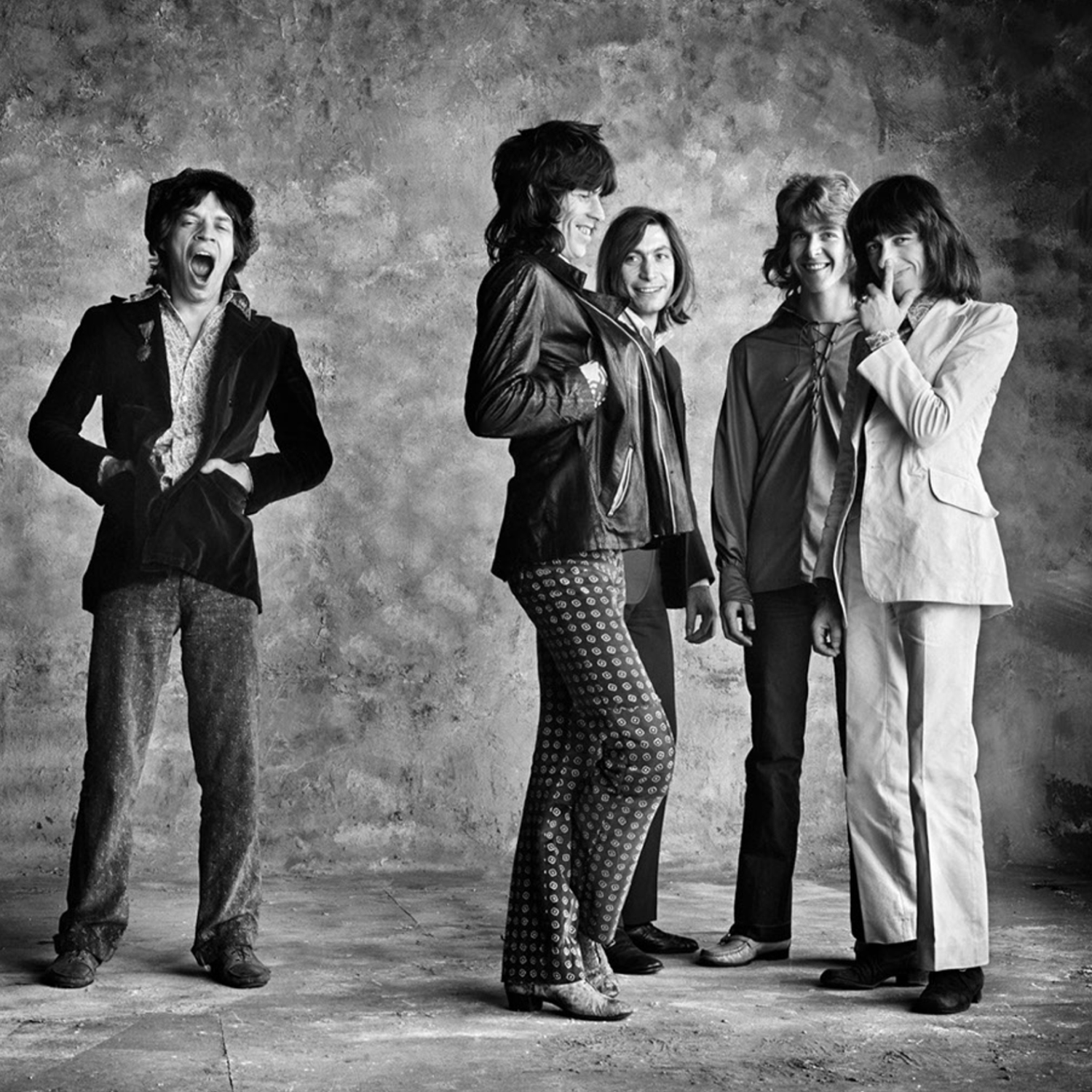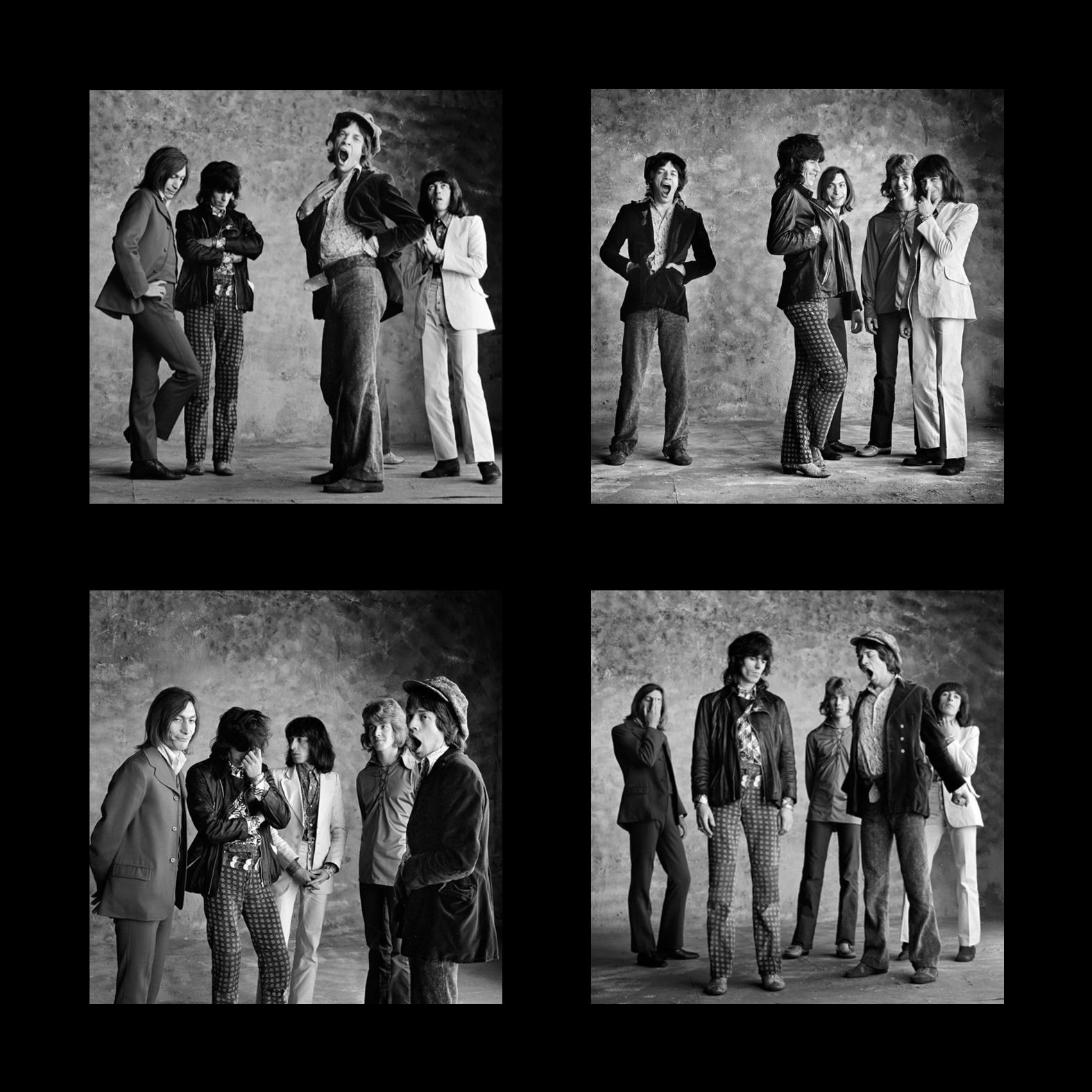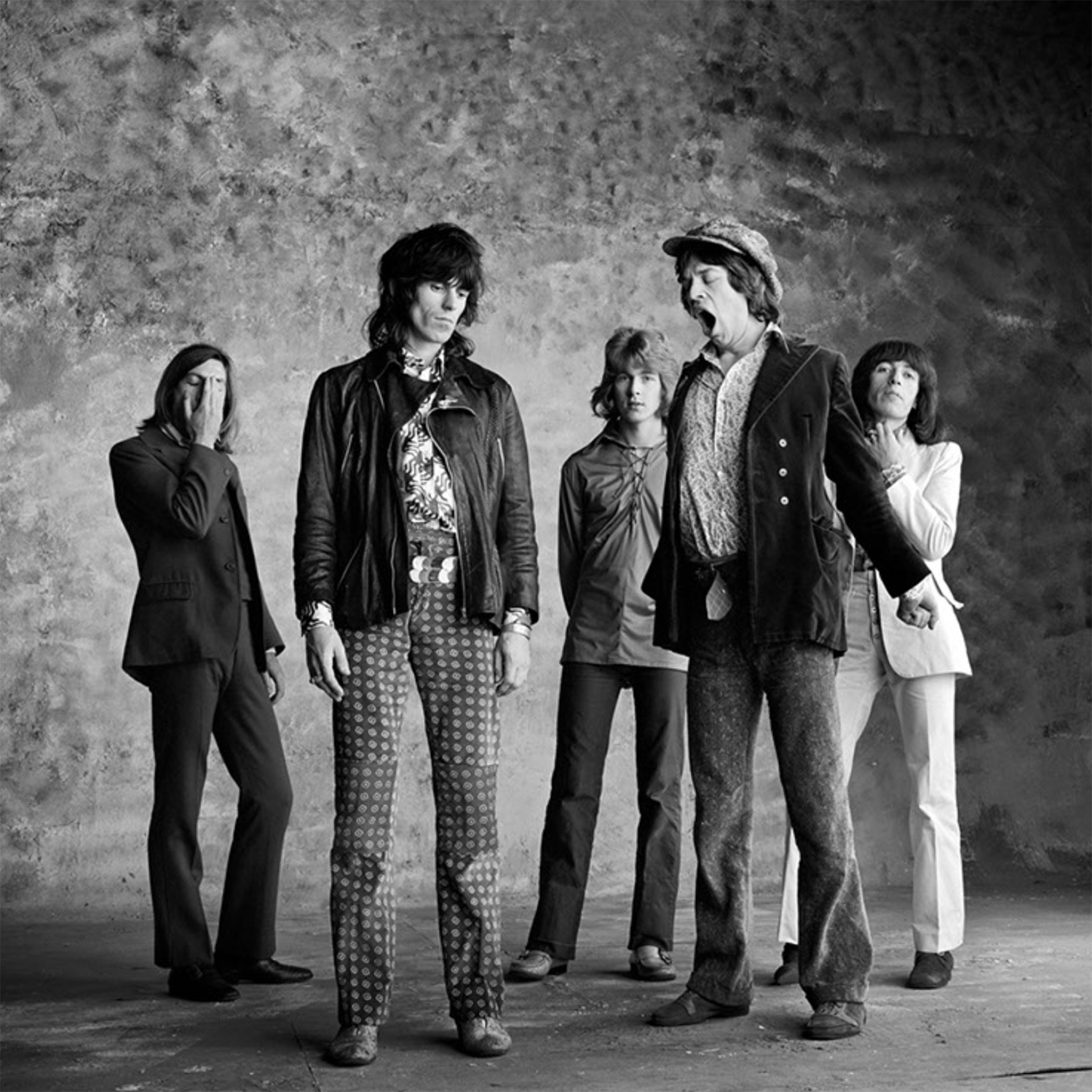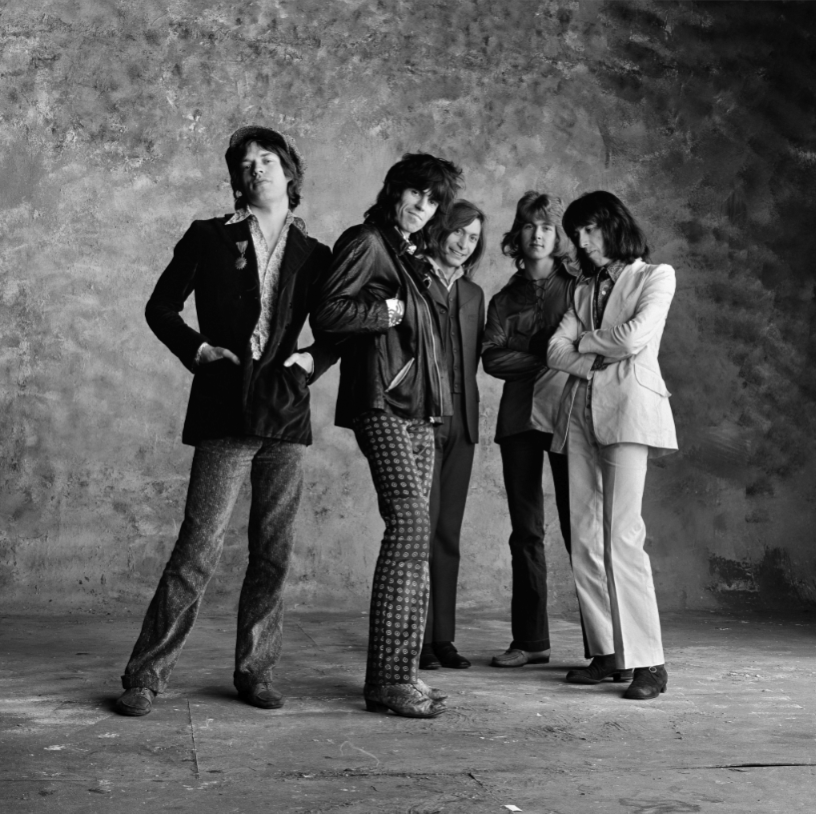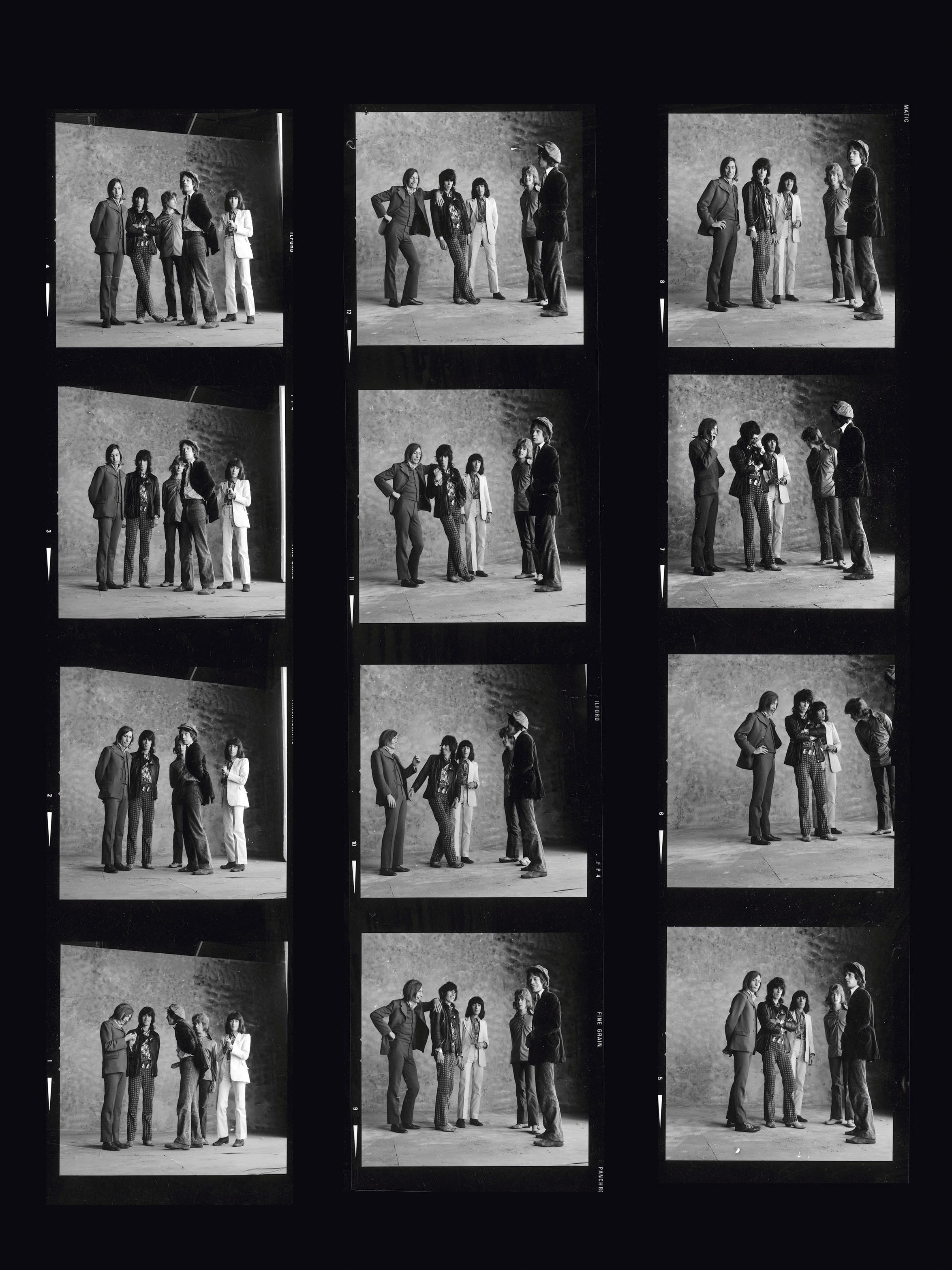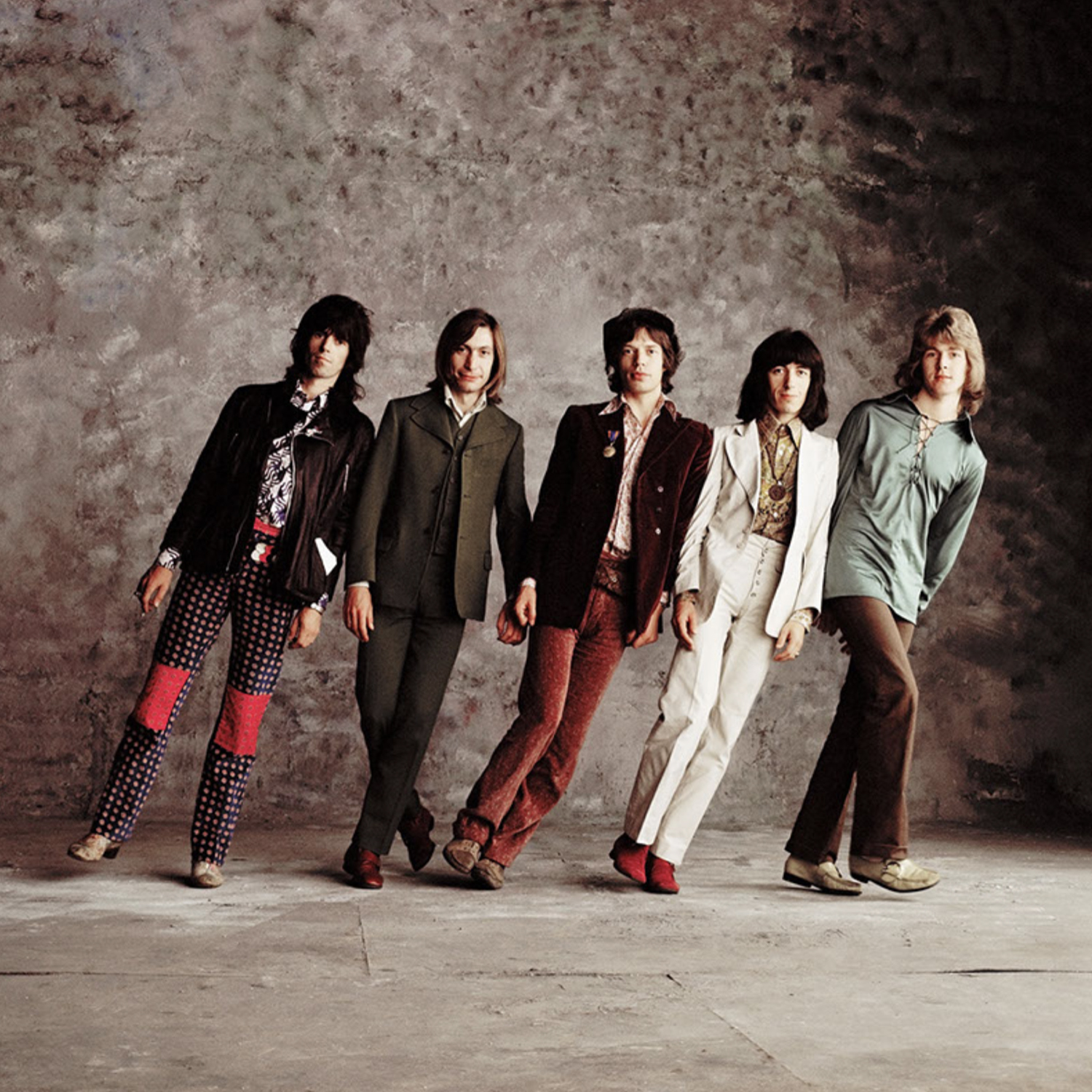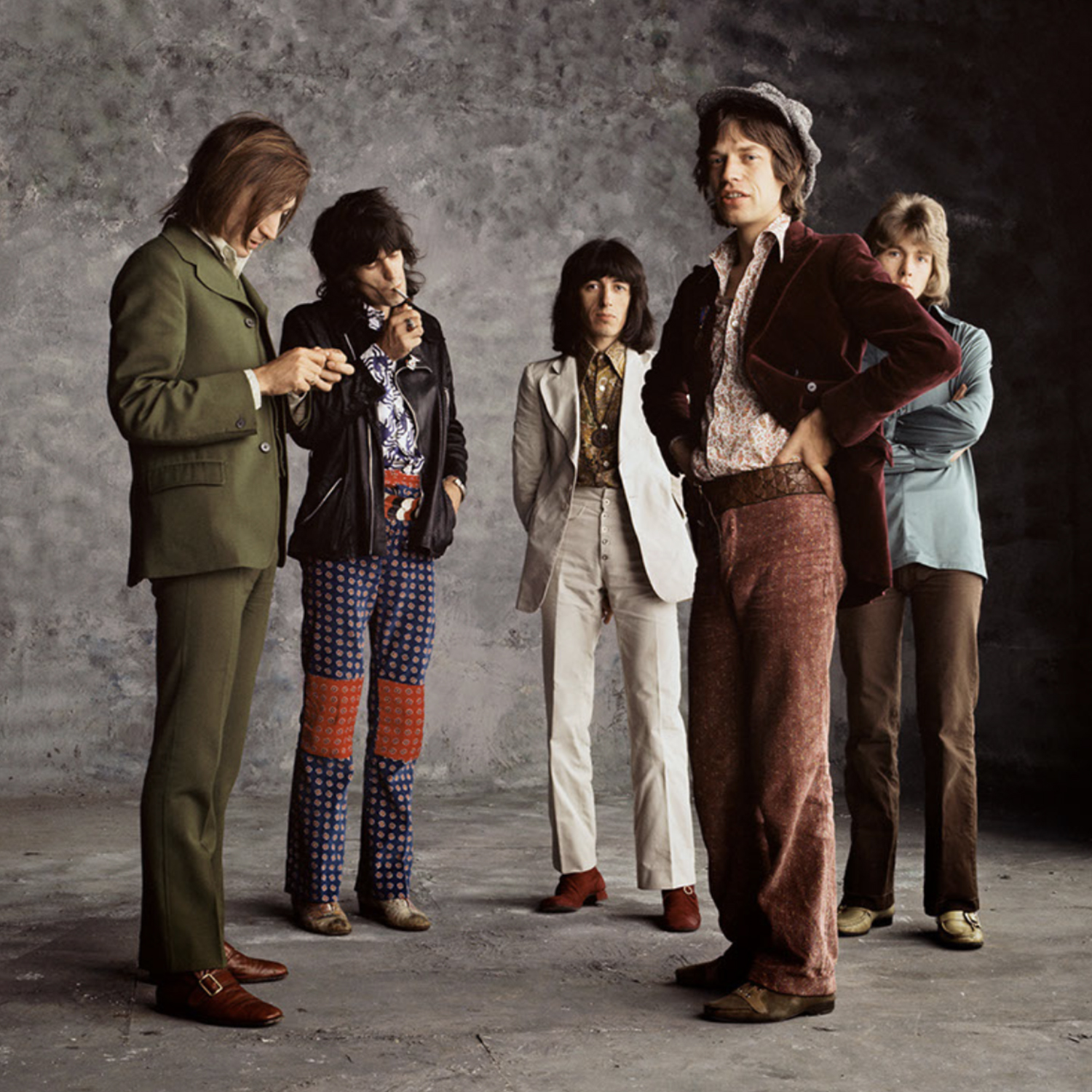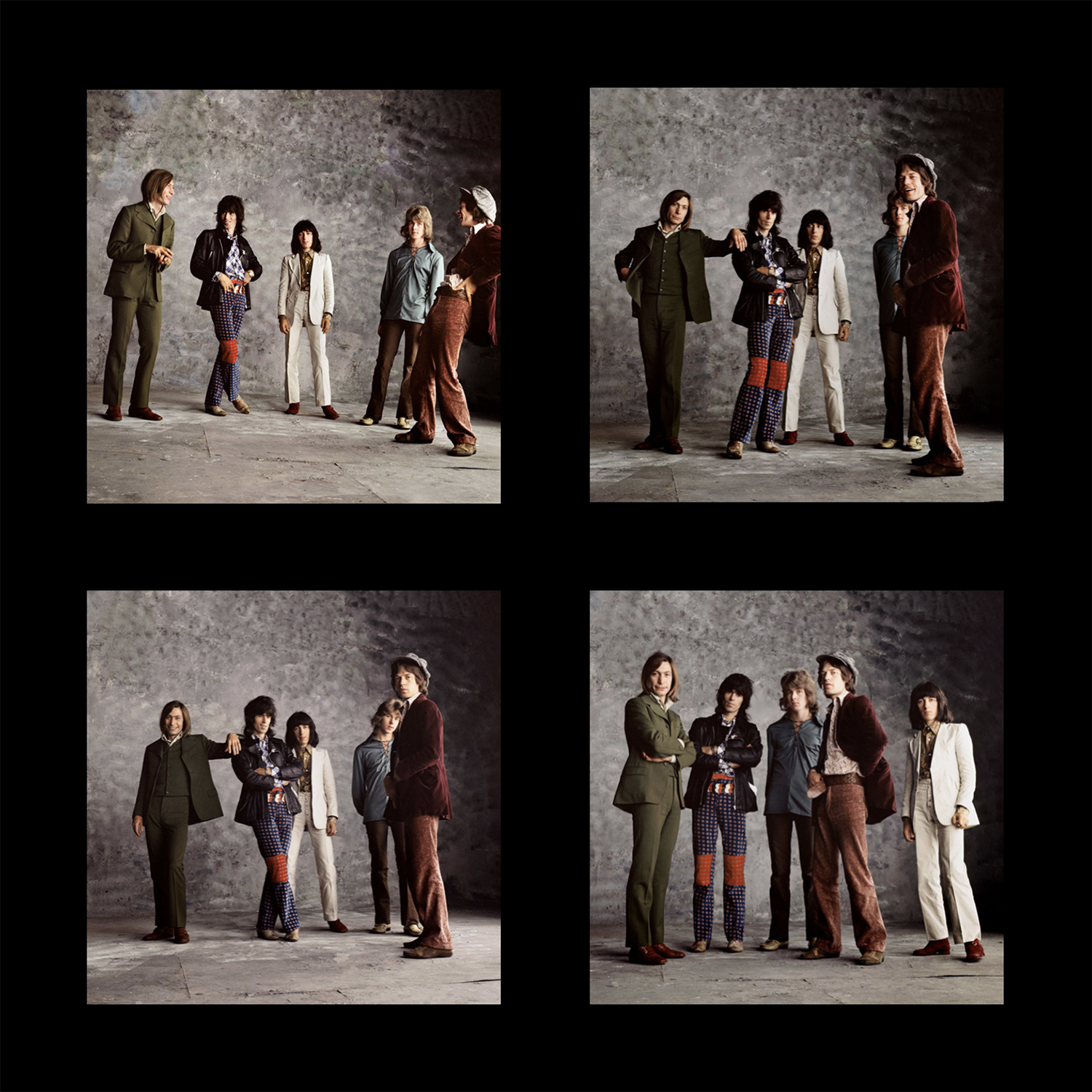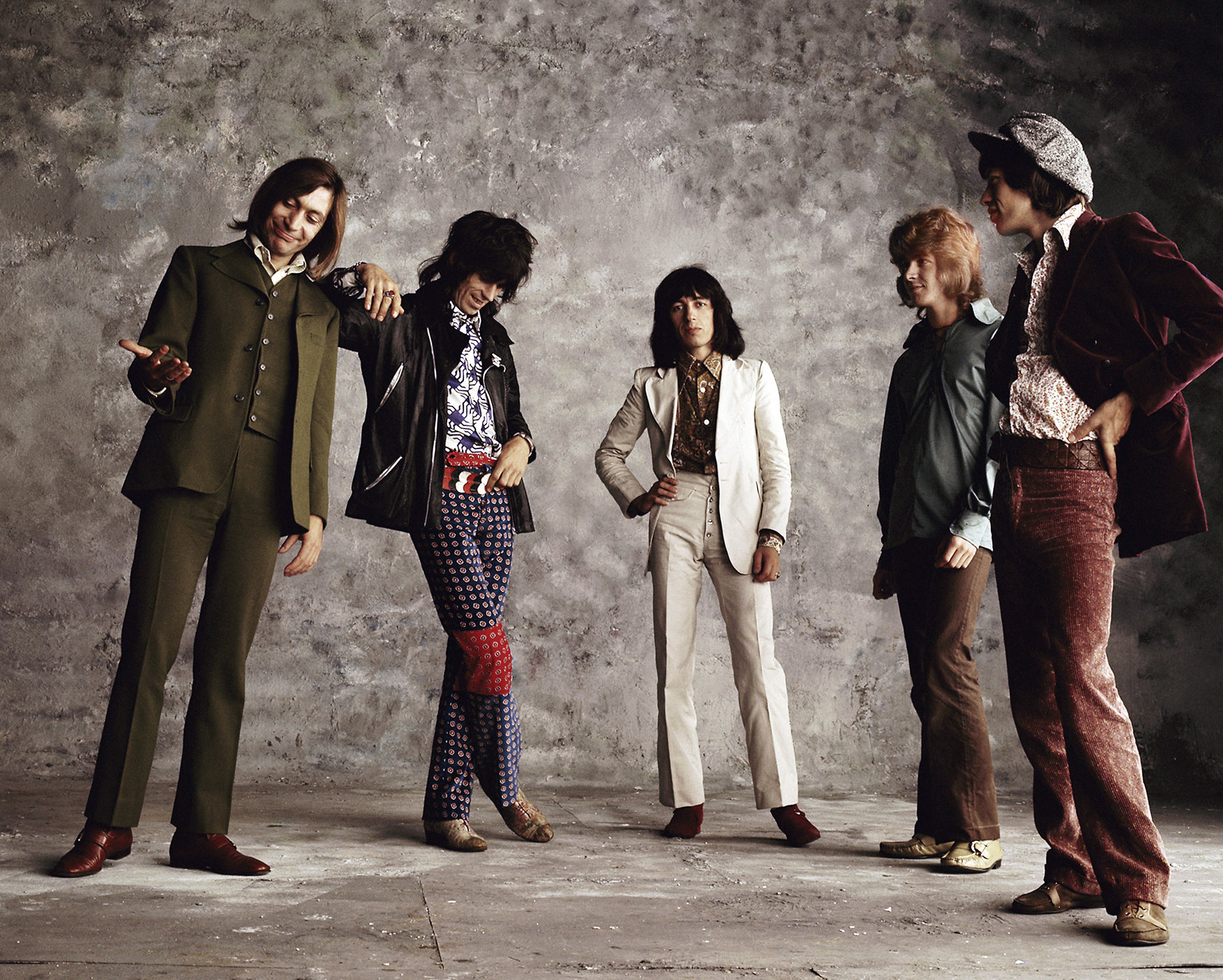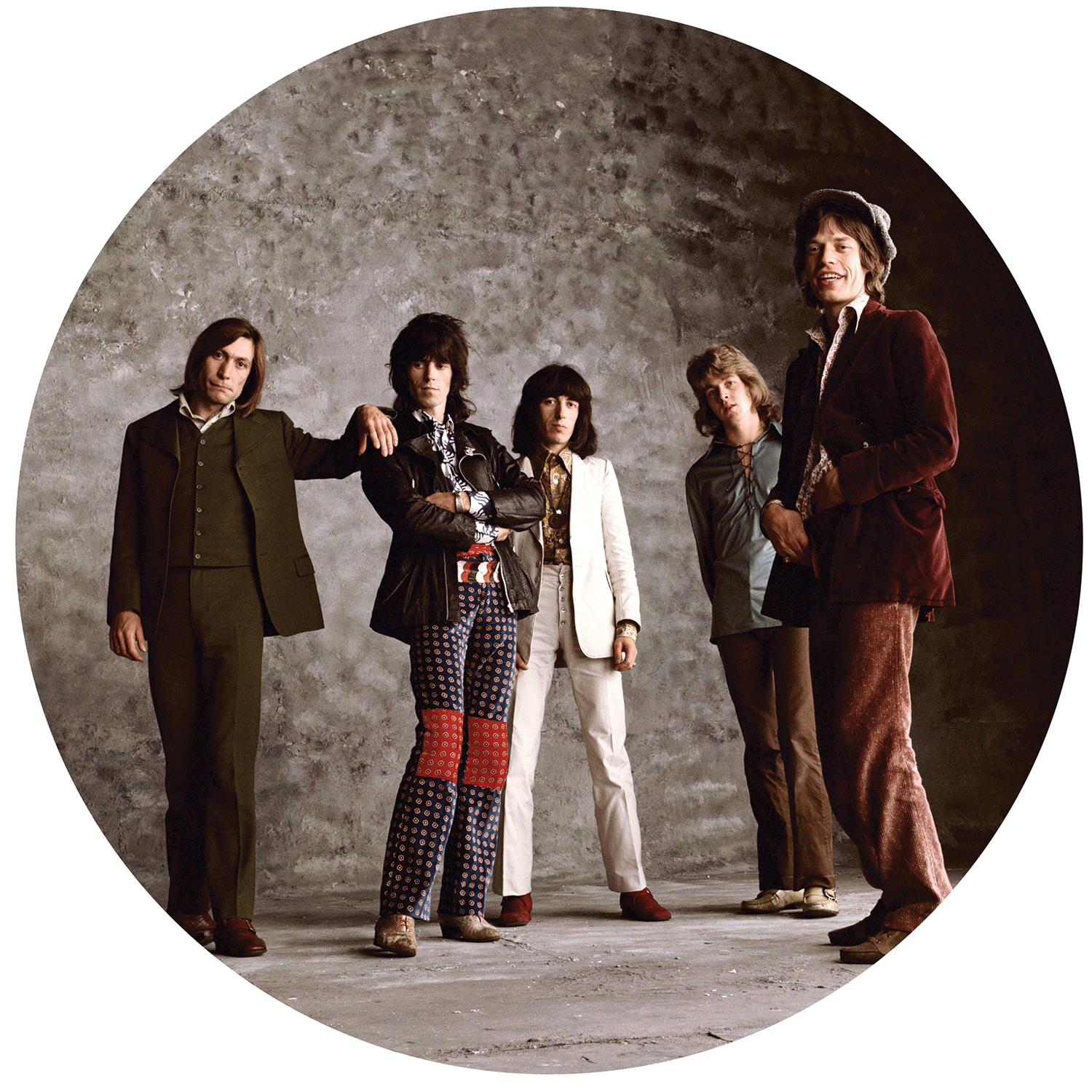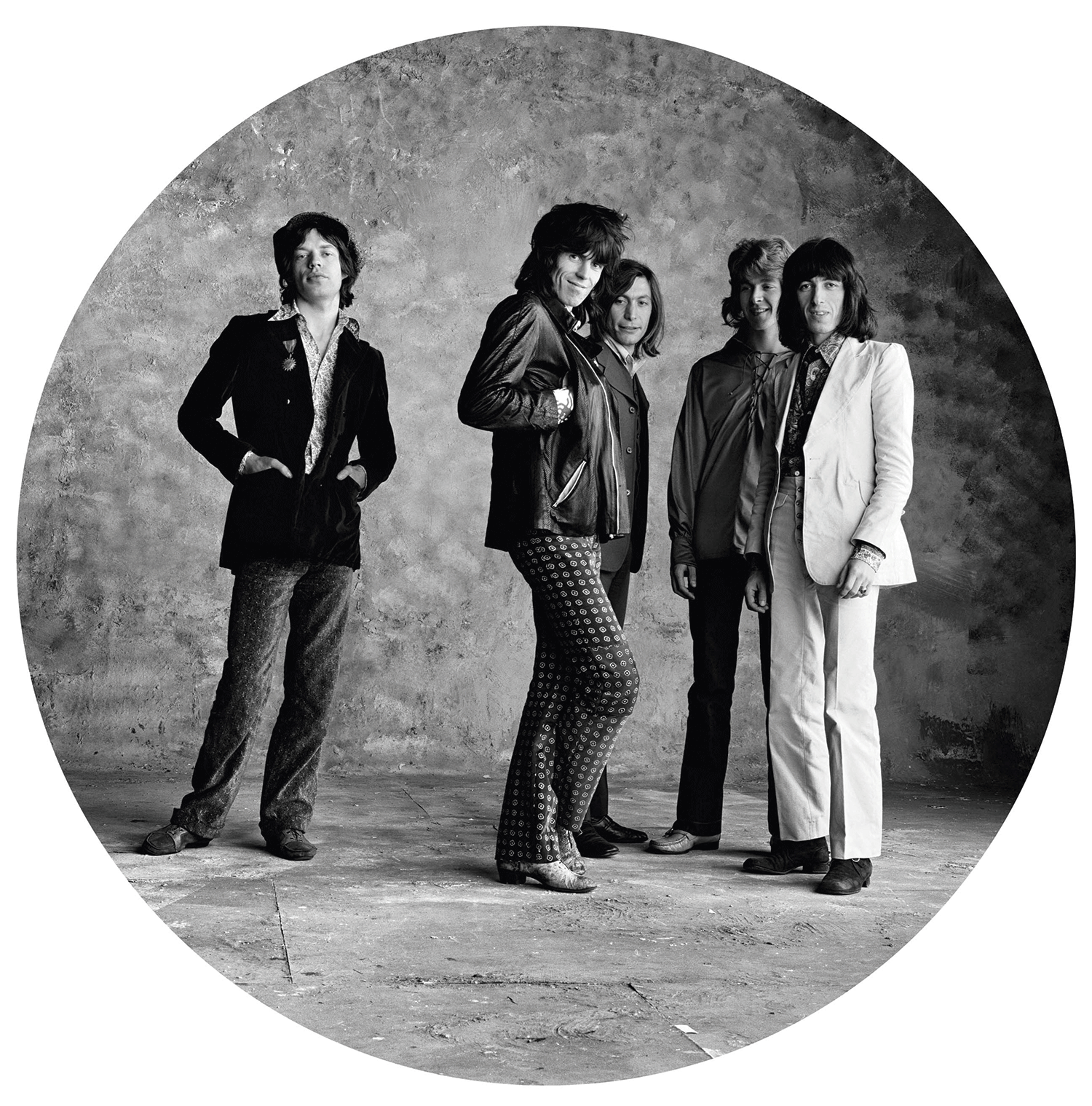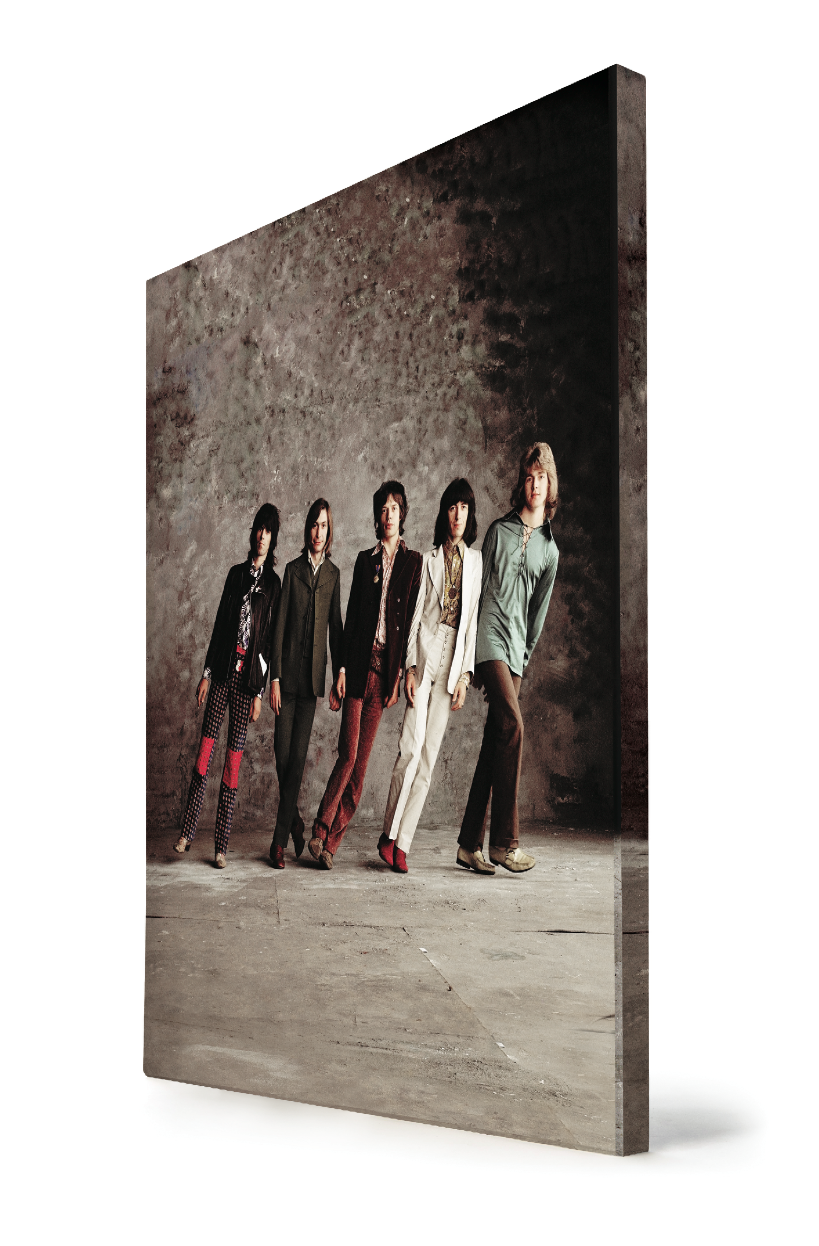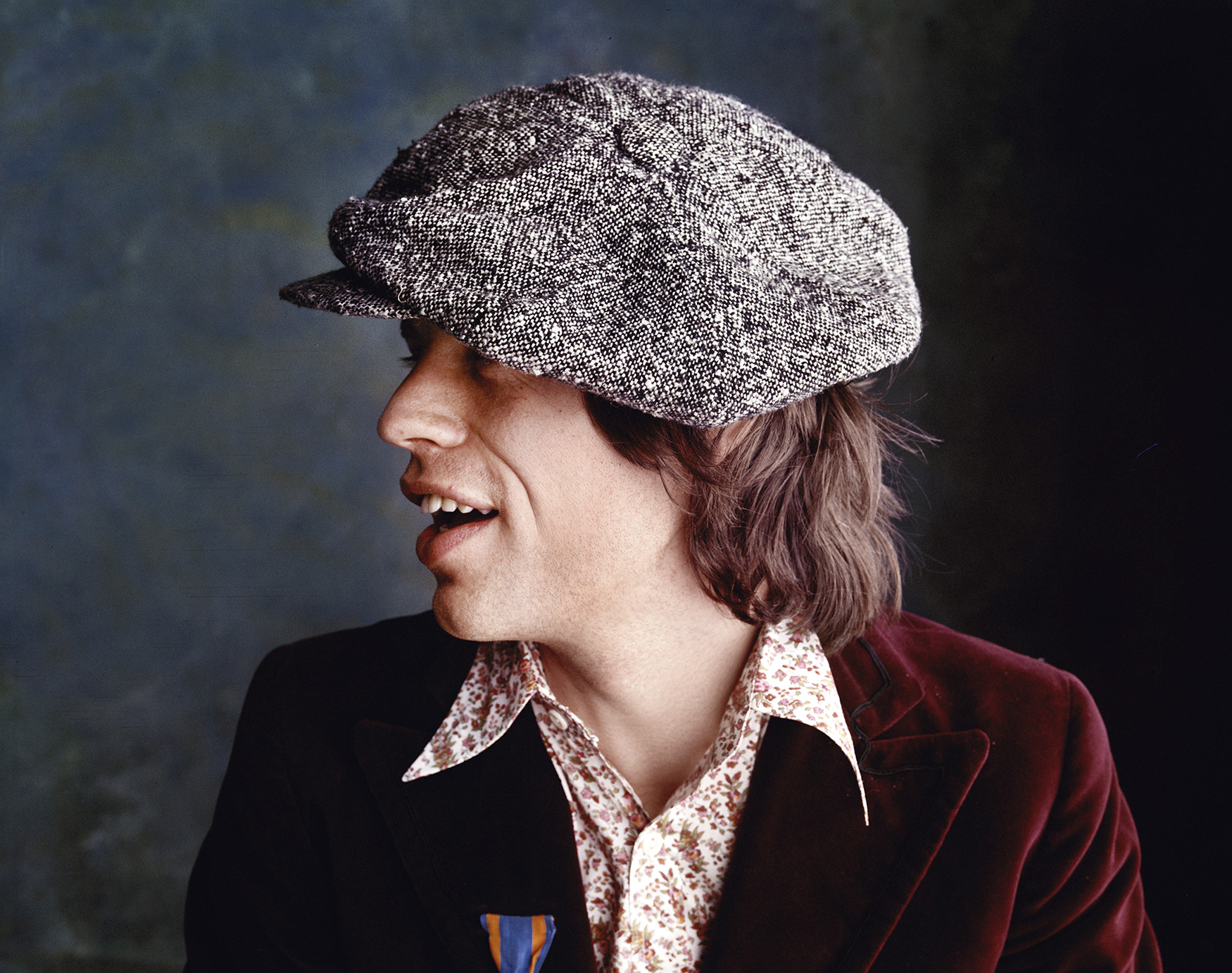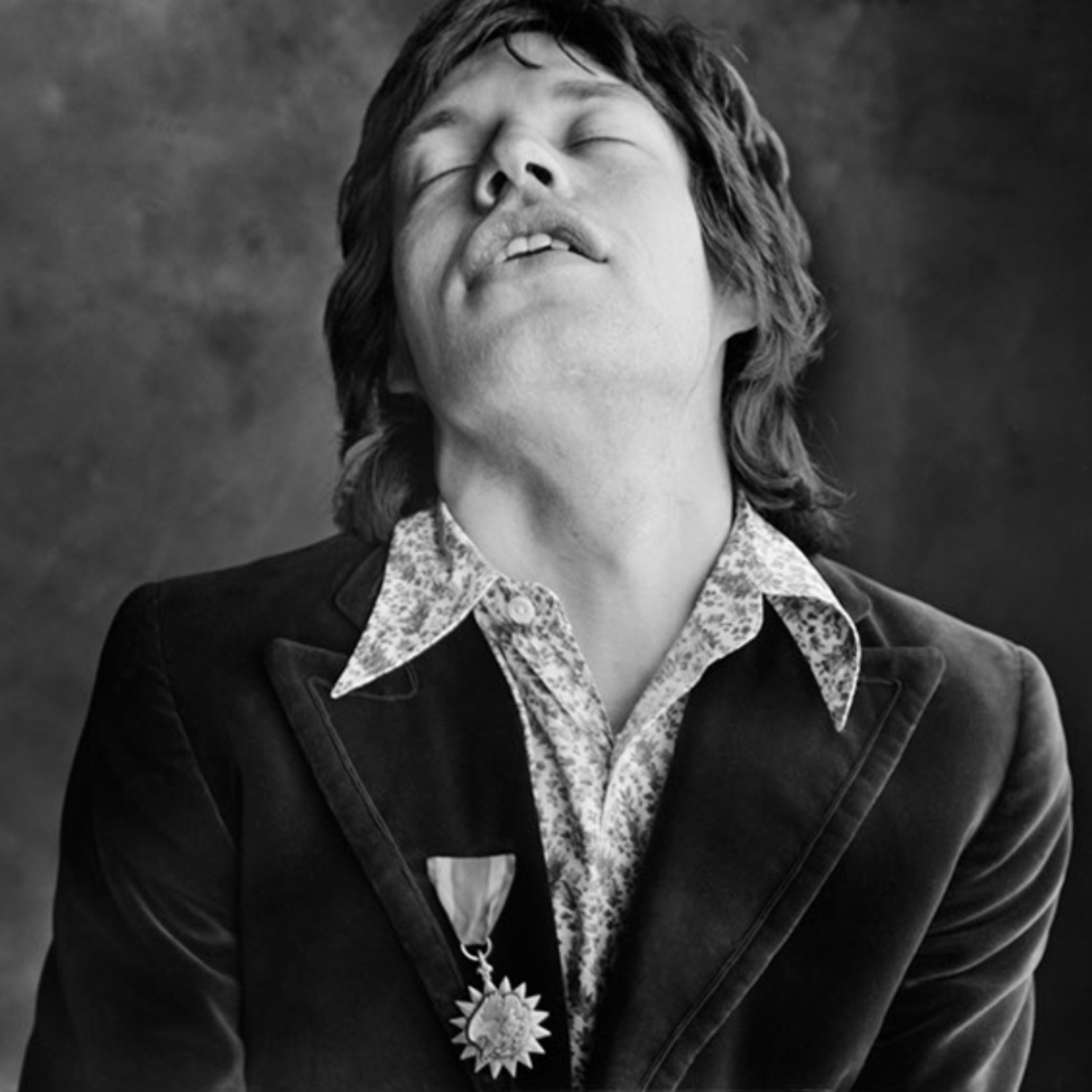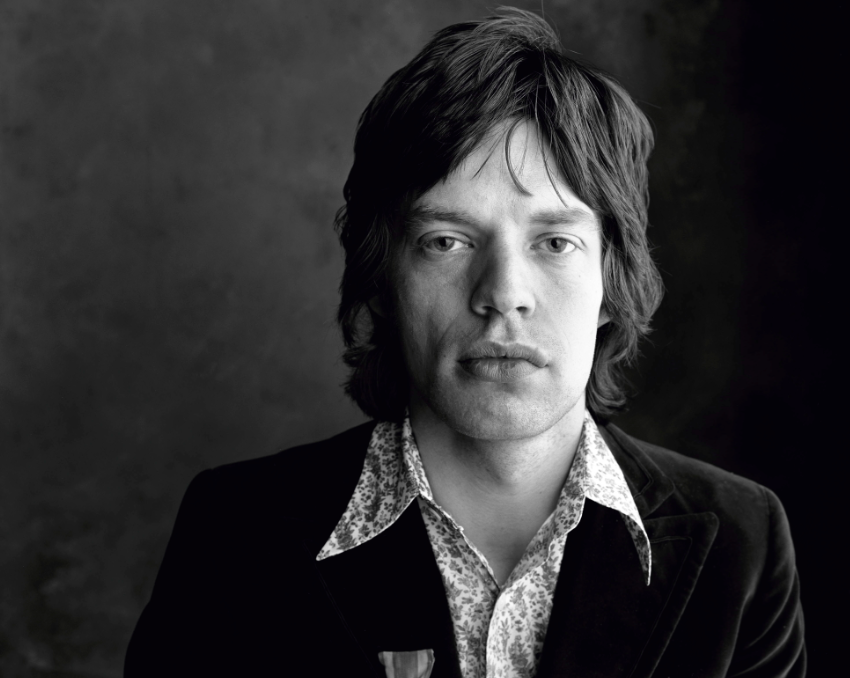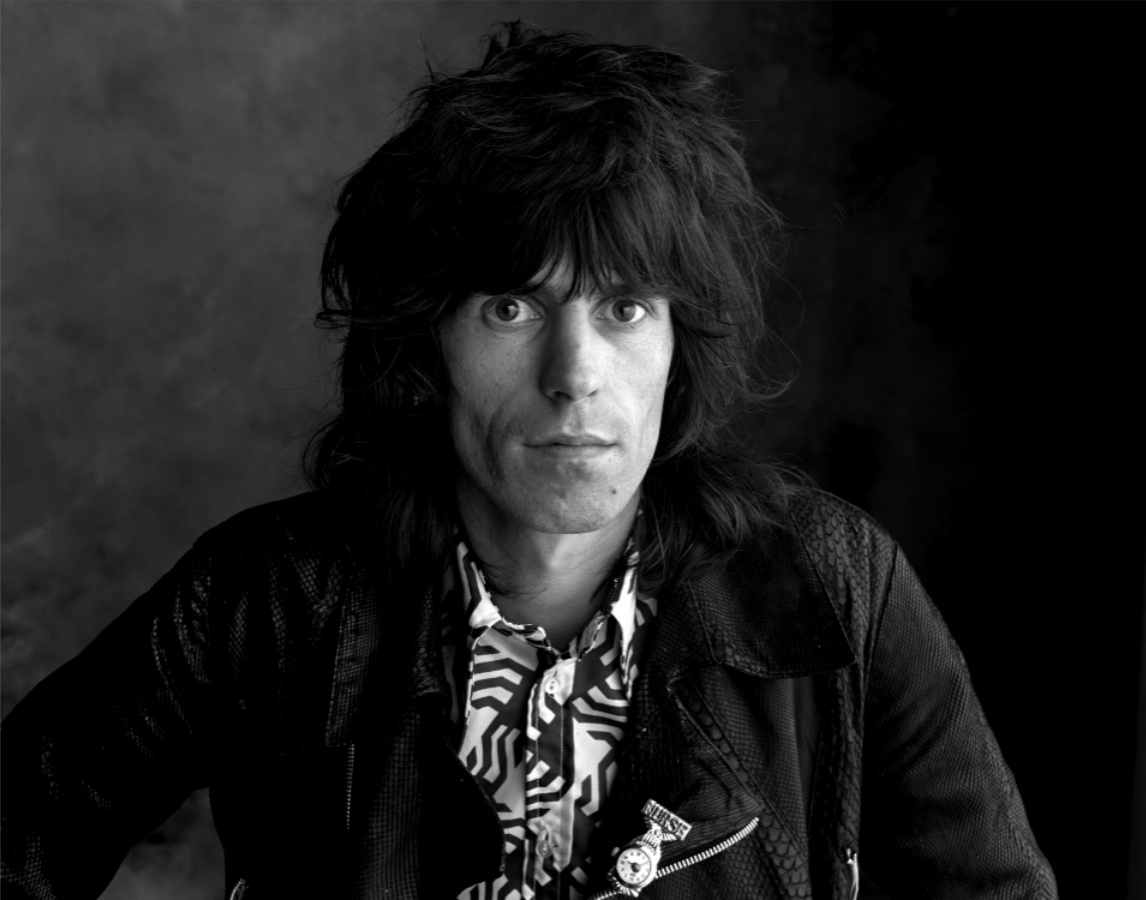Peter Webb photographed The Rolling Stones for their Sticky Fingers album, and famously then lost his negatives for almost 40 years.
It’s a story that would give any photographer sleepless nights. A classic photo-session for one of the biggest bands on the planet, The Rolling Stones, for the cover of one of their most critically acclaimed albums, 1971‘s Sticky Fingers. Disaster then strikes, as British photographer Peter Webb’s negatives go missing soon after the shoot. Then, out of nowhere, they are discovered again after a gap of almost 40 years.
In early 1972 Peter entrusted his photographer brother-in-law with the safe keeping of an unmarked folder of negatives, which was, as Peter later recalled “…an essential detail which I had conveniently forgotten, in the excitement of being hired by Ridley Scott to direct commercials, and the dark room became a cutting room overnight.”
Almost 40 years later, Peter received a phone call from his brother-in-law, who had by chance found an unmarked bag of negatives amongst his own work and which, as he explained to Peter “…could be the Rolling Stones.” Contained in their pristine negative sleeves were all the group shots from the session, and also an unexpected further delight: some individual plate camera portraits of Mick Jagger and Keith Richards which had never been seen before.
We hosted an exhibition of these lost and found photographs with Peter at our gallery in central London in 2011, and a few years later in 2014 we published a large-format limited edition signed book—which preserved all the surviving photographs from Peter’s historic session with the Stones.
Peter Webb passed away in August 2021 – and we will miss him greatly. Happily, his legacy will live on, as we are now working with Peter’s estate to offer photographs from his Rolling Stones archive to collectors as posthumous estate authorised limited editions.
You can read all about these as you scroll down this page.
The limited editions
A selection of estate authorised posthumous limited editions available to order now
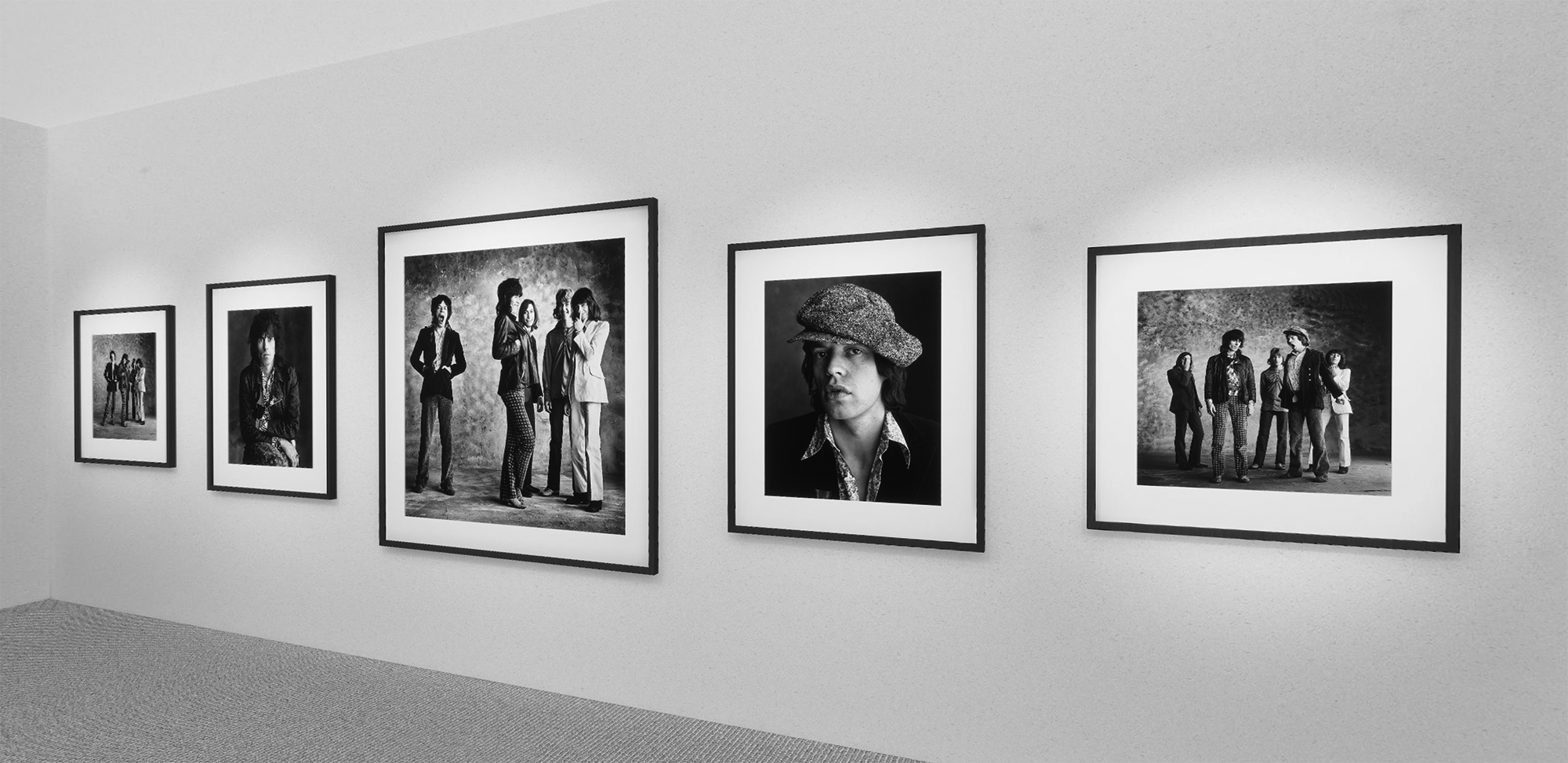
Limited editions
Peter Webb’s archive offers posthumous estate authorised photographs in limited editions of 50 worldwide. This is the important part: the maximum edition size for any individual image is 50 examples worldwide across all physical size options all sizes (and not 50 in each size).
When you select the “Buy” button under an image you will go to a page showing a range of physical size choices and corresponding prices. We have included prices for a few alternate size options, but each photograph can be made in any size—however small or large—to suit your space requirements. If you can’t see the exact size for you don’t worry —please just ask for a quote based on the size you would like.
Each photograph is made to order—please allow 3 weeks between order and delivery for an unframed photograph. We can organise framing for you—please ask for a quote based on your location. Framing adds an additional 2-3 weeks to the lead time.
Each estate authorised posthumous limited edition photograph is embossed with the Peter Webb Archive stamp and individually numbered on the front. Each one is supplied with a certificate of authenticity issued by the archive.
The Big Yawn
The Big Yawn-Peter Webb’s instantly recognisable classic Stones group portrait
Sticky Fingers needs no introduction to Rolling Stones fans. Released on 23 April 1971, the album was the third in the run of four studio albums between 1968 and 1972 (Beggars Banquet, Let It Bleed, Sticky Fingers and Exile on Main Street) which many fans believe represent The Stones at their creative peak.
Instantly recognisable for its’ Andy Warhol cover, early vinyl pressings of the album included a separate 12×12 inch pull-out featuring an uncredited 1971 black and white studio portrait of the band. In that photograph, Mick Jagger stands to one side yawning, while Keith Richards, Charlie Watts and Mick Taylor laugh, and Bill Wyman scratches his nose. For obvious reasons, Peter has christened that important photograph “The Big Yawn”. It is one of Peter’s best known photographs.
Ahead of the shoot, Peter Webb spent many days extensively testing both lighting and background tones. With the preparation all in place, the Stones showed up on the appointed day at Peter’s studios, the converted Victorian Riding School and Stables next to Regent’s Park in central London. He recalls:
Peter recalled “They immediately registered disappointment that they were going to be photographed in their own clothes, and that there was no “idea” anywhere in sight. And far from being “trouble”, the band stood like lost schoolboys on the over-scaled backdrop, and were not only compliant to my instructions in arranging them, but even seemed somewhat camera shy – which was totally unexpected.”
Something very special happens when these images are viewed in large formats.
Take this extract from ‘The Big Yawn Revisited’. With scale, the detail and textures leap out at you—like the leather pattern on the inside of Mick’s belt, or the grain on Keith’s jacket. Little details that ordinarily you just wouldn’t take in.
Take a moment. Looks pretty incredible doesn’t it?
Falling Stones
“Falling Stones”, a colour portrait shot by Peter on Kodak Ektachrome 120 transparency film, is one of the most famous photographs from the Sticky Fingers session.
At some point in the shoot, Webb asked the Stones to act a little more threateningly, and Mick, Keith and the band duly obliged. Finally things loosened up to a degree, and as a one-off idea he lined up the band shoulder-to-shoulder, like a younger Dad’s Army, and encouraged them to lean sideways.
Thankfully the 1,000th second exposure time-captured this one-off event, and the resulting image was “Falling Stones”.
Circular Stones
These limited edition photographs are made as ChromaLuxe prints, which are supplied pre-cut in a circular shape, ready to hang.
If you haven’t seen a ChromaLuxe print before, you are in for a treat. They have an ultra-high-gloss finish, with richly saturated colours and a jewel-like appearance. The technique uses a process called dye-sublimation to fuse the image directly on to a 1.25 mm thick panel of white-coated aluminium—which gives them in-built structural rigidity. They hang straight on the wall without additional framing because there is a special subframe on the reverse—this allows the artwork to hang on the wall while appearing to float. Additional framing/glazing is not required (as ChromaLuxe has a scratchproof surface).
They can be cut in specific shapes—like these circular artworks.
Customisation
Are you an interior designer working on a brief requiring pieces in bespoke formats and sizes?
Are you a collector needing a piece to fit a huge wall in a home or office?
We can help, as images from Peter Webb’s archive can be made in custom sizes to suit you.
Modern printing technologies mean that we can now source prints, ready to hang, in sizes up to an eye-popping 500cm x 240cm (196 x 94 inches). That’s close to 16 feet x 8 feet—a truly staggering size if you need it.
Maybe you want to create a wall of different images with a consistent look and common size—or like the idea of a grouping of circular artworks in different sizes?
All these things and more are possible.
Get in touch and we can discuss how we can help you bring your vision to your wall.
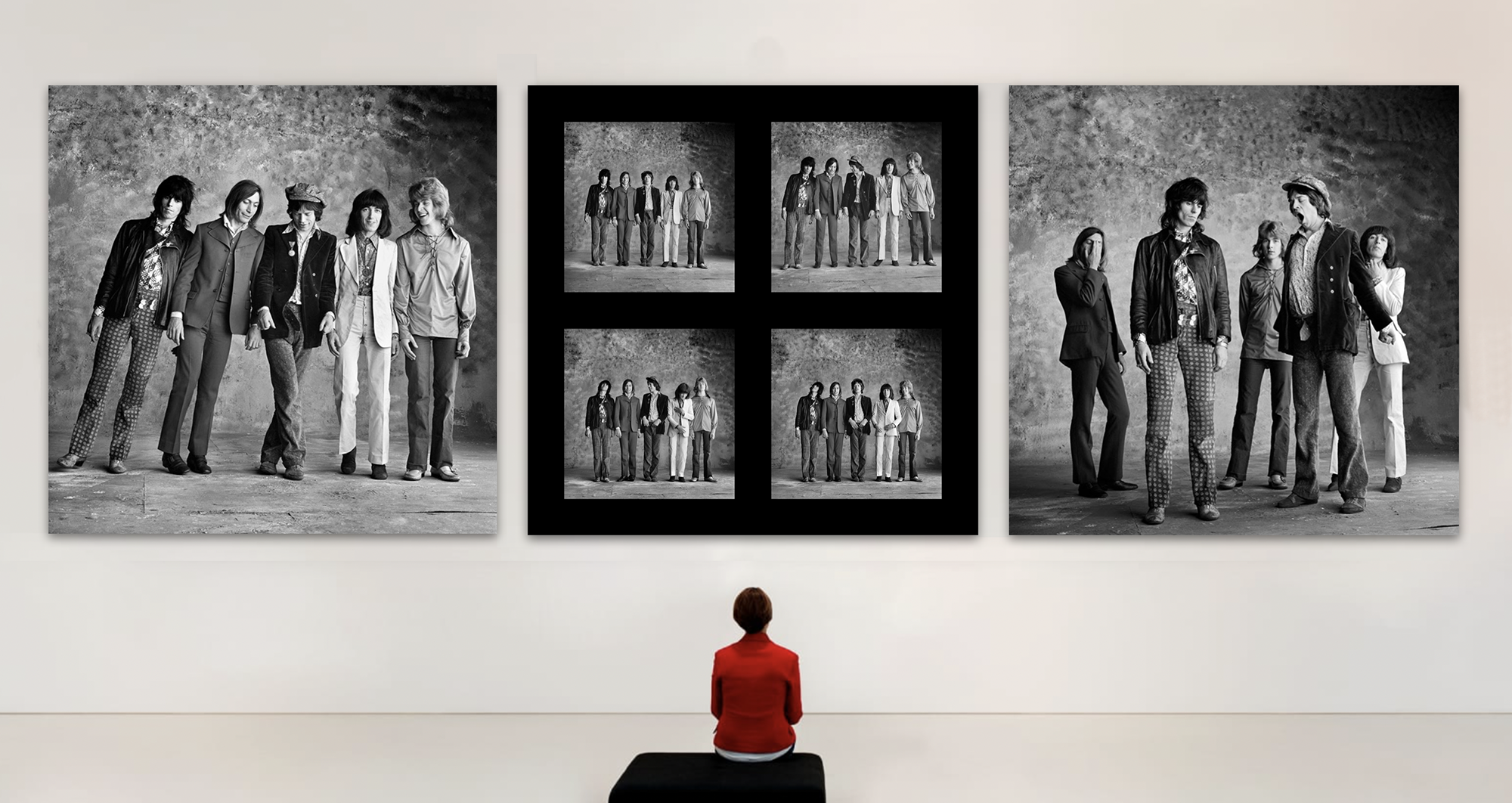
Modern printing technologies allow for individual photographs to be made in sizes up to 500 x 240cm (196 x 94 inches). Square images like those shown above can be made in bespoke sizes up to 240 x 240cm (94 x 94 inches) —a huge and stunning scale. The examples shown here are presented mounted under acrylic, backed by aluminium dibond with a subframe on the reverse for hanging. This is a frameless style of frame where the image appears to float off the wall.
Sticky Fingers: The Lost Session
Introducing a very special limited edition book
A large format limited edition book from Ormond Yard Press that you can display on your wall just like a work of art and enjoy every day.
Sticky Fingers: The Lost Session the limited edition book from Ormond Yard Press.
Ormond Yard Press: Bringing You The Bigger Picture.
As with all Ormond Yard Press volumes, it is a book on a spectacular scale: a hardcover volume housed in its own printed slipcase and measuring 24 inches high x 18 inches wide (60x45cm) when closed, 24 x 36 inches (60 x 90cm) when open, with 96 pages of photographs. The physical scale may be large, but the edition size is reassuringly small – just 500 individually signed and numbered copies are available to collectors worldwide.
You can read more about the book, and the special wall-hanging display unit we have designed for it, here.
Update: Sticky Fingers: The Lost Session is now sold out.
Individual Portraits
After the group session was completed, Peter Webb invited the band individually to an upstairs studio set up with a 5×4 Sinar plate camera, whose depth of field was so slight that a wooden rod had to be placed at the back of each band member’s head, so there would not be the slightest movement backwards.
After more searching enquiries from the various band members as to the purpose of the portraits – “Passports, is it now mate?” – Webb photographed the individual group members, including Mick Jagger in a number of extreme close ups, with and without a stylish Irish cap and a long-collared paisley shirt, fashionable at the time.
Biography
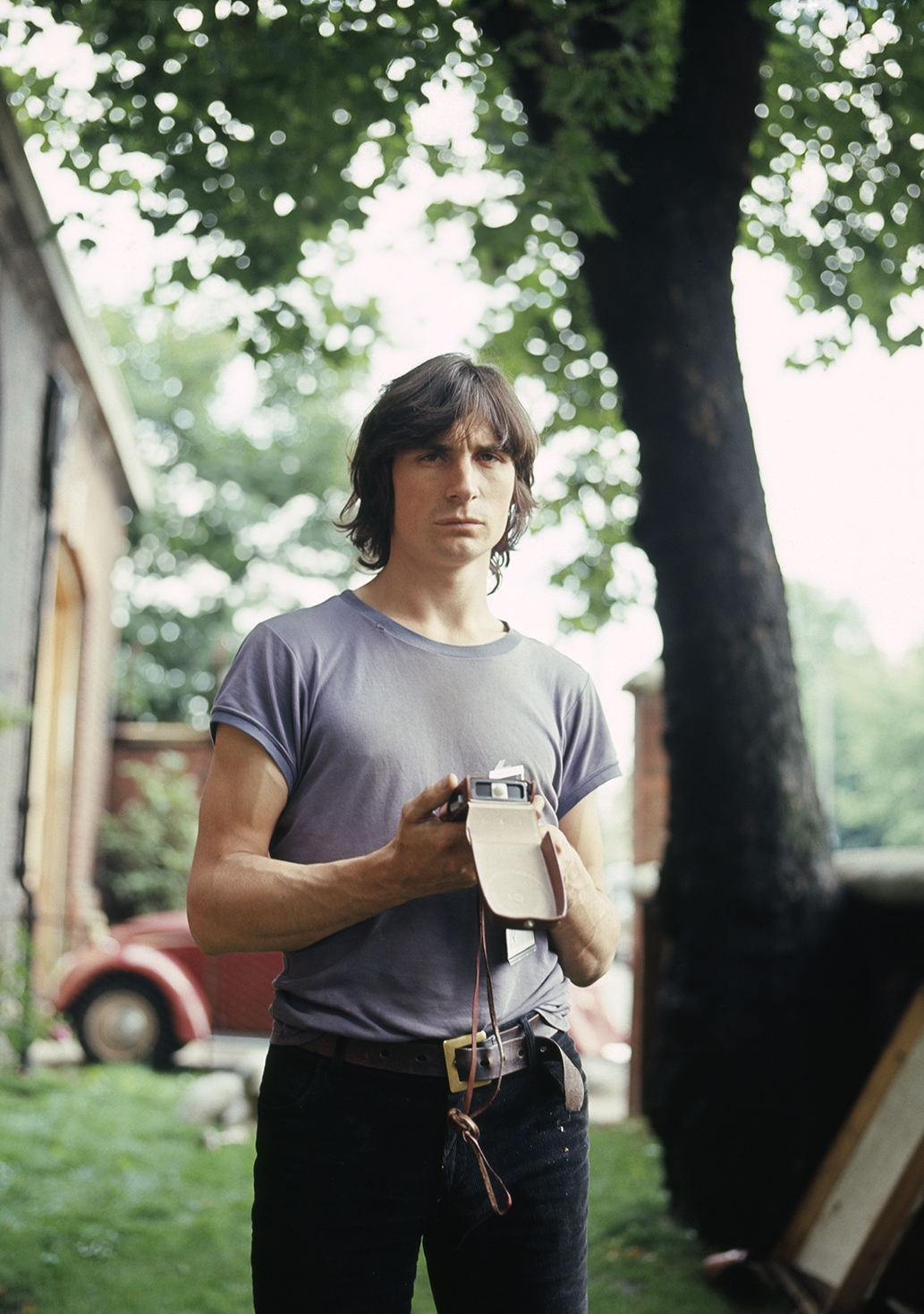
As a Cambridge law graduate, Peter Webb is forever thankful he abandoned the Inns of Court for a post-university year in America. Moving straight into the world of Mad Men, he was hired as assistant to the legendary Photographer/ Director Howard Zieff (Private Benjamin, My Girl etc) in his studios a block west of Madison Avenue. On returning to London, Webb rapidly made a name as a multi-award winning advertising photographer, and was then head-hunted as a director for Ridley Scottʼs commercials company. He later established his own company Park Village Productions, based in the magnificent Victorian Riding School and Stables in Regents Park, lovingly restored and converted by Webb himself. Park Village remains a leading production company, with Webb and his colleagues having set the bar by winning all the premier awards in the business over the years, including the Palme DʼOr at Cannes as the top Commercials company worldwide twice.
Never a man to stand still, Webb went on to direct the BAFTA award winning Butch Minds the Baby, followed by Give My Regards to Broad Street starring Paul McCartney and Bryan Brown. Webb was thrilled by the discovery of his long lost Sticky Fingers negatives in his US brother-in lawʼs London attic, where they had lain unnoticed for nearly forty years.
Peter Webb passed away in August 2021.
